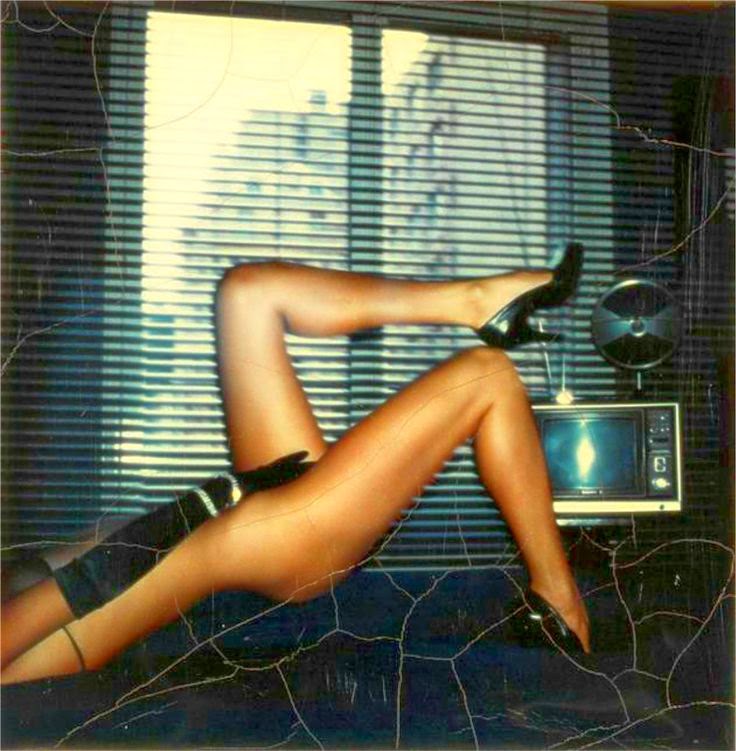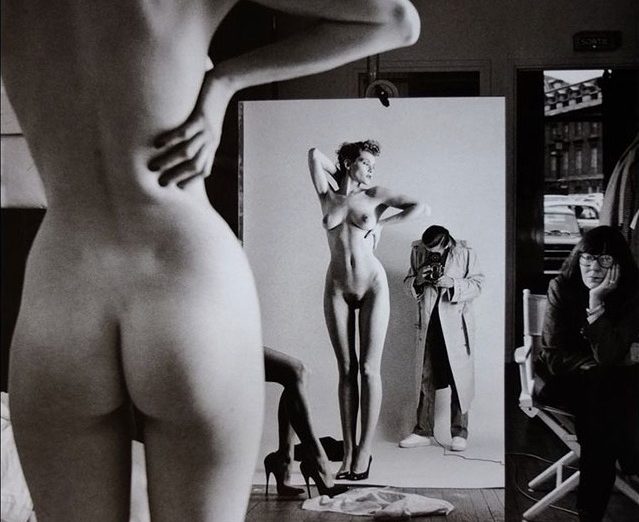Helmut Newton, a feckless, un-scholarly boy grew up to transform fashion photography. Probably the most imitated and controversial fashion photographer of his time, Newton earned the nickname King of Kink as well as a fortune. “If a photographer says he is not a voyeur, he is an idiot,” Newton once said. His erotic and dream like images were like a peep through a key hole, spied moments of a heightened reality.
As a person, Newton was unsurprisingly complex. A bohemian and yet very pragmatic, he insisted that he was not an intellectual and did not stand for much. His sardonic humor, delight in mischief, and nonchalant sense of irony are obvious in his work. He considered America weird, exotic, and outrageous. Though a slave to his own imagination, Newton claimed that his photographs were entirely based in reality. He was inspired by Film Noir, Expressionist Cinema, S & M and Surrealism. His many obsessions were rooted in his childhood, in the decadent, avant-garde capital that was Prewar Berlin.
In 1930's Germany, adolescent boys were told that excessive masturbation produced dark circles under the eyes; decades later, Newton would tell the makeup artists at his shoots to either keep the masturbation rings or add some. His use of uniforms and prosthetic devices, particularly the neck braces can be traced back to propaganda films, Wiemar Republic and Actor / Director Erich Von Stroheim.
In 1930's Germany, adolescent boys were told that excessive masturbation produced dark circles under the eyes; decades later, Newton would tell the makeup artists at his shoots to either keep the masturbation rings or add some. His use of uniforms and prosthetic devices, particularly the neck braces can be traced back to propaganda films, Wiemar Republic and Actor / Director Erich Von Stroheim.
As a photographer, Newton moved fashion tableaux from Norman Parkinson’s staid and still illustrations of the season’s styles to a very radical and racy reflection of the zeitgeist. The 1960's and seventies was a creative time for fashion photography. Instead of decorous compositions of autumn leaves, Harris tweeds, and white ladies gloves, Newton ushered into Vogue the realms of cocaine, Patty Hearst, lesbians, bondage, sadomasochism, voyeurism, murder, pornography, prostitution, and threesomes. Helmut Newton’s models and their provocative poses were a direct reflection of the sexual revolution of that liberated era. His Neo Noir settings reflected a leap backward in time—and, as a result, in the words of Karl Lagerfeld, “his pictures have survived better than the fashion they were meant to represent or illustrate.”
Feminist critics often condemned Newton’s suggestive and risque work much to his delight but the women in his photographs do not in general appear to be victims; more often, they are the powerful and manipulative perpetrators of some dark crime. The immaculate, Amazonian, and assertive figures in his multi layered mise-en-scenes take the lead rather than follow, and indeed seem capable of dominating the masters of the universe, both mentally and physically. Unlike many of his colleagues, Newton preferred to work with lesser-known models and hated surgically amplified breasts. His subjects were tall and Teutonic, blonde and beautiful, confident and cruel and consistently achieved a glossy perfection. Though they are often naked and surrounded by the accouterments's of sexual desire, they remain immune to seduction and are never consumed by passion. Posing insolently in richly ornamented chairs or reclining with spread legs, his haughty, high-society belles convey a blasé aristocratic demeanor, untouched by their surroundings and their circumstances. Sinister props (a pistol, handcuffs, medical corset, wheelchair, or dog collar) mingle with status objects (stilettos, dark lipstick, furs, a saddle, a chauffeur and his limousine), giving the erotically charged scenes a sense of palpable menace.
Newton avoided working in studios, preferring to arrange his set-pieces in the lushly appointed and darkened rooms of turn-of-the-century mansions or hotels, or in the half-decayed gardens of elegant villas. Instead of the measured light of a controlled studio, he preferred either the harsh glare of the midday sun or nocturnal shots, illuminated by headlights or a lone street lamp.
Helmut Newton wrote "like well-behaved children, should be seen and not heard. Fortunately for posterity, his photographs speak volumes"











